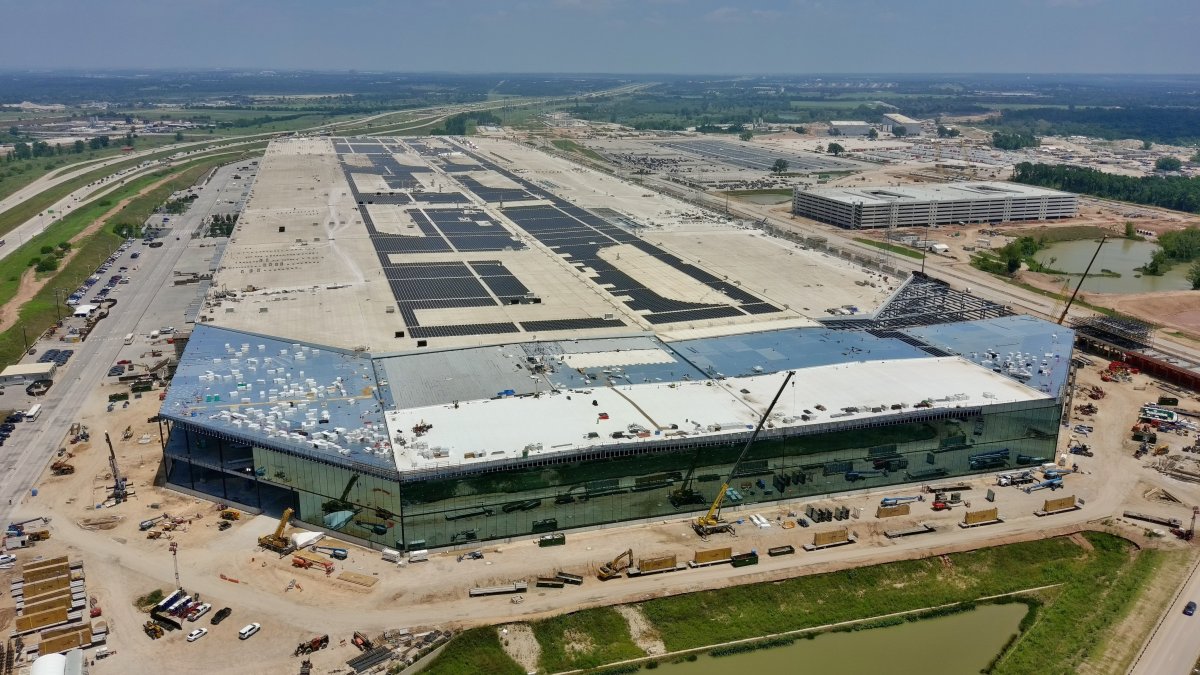May 22, 2024

Elon Musk, the visionary behind performance-epa-ratings-wheels">Tesla, has officially confirmed that a groundbreaking project is underway at Giga Texas. In a recent social media update, Musk revealed that Tesla is set to expand its supercomputer capabilities with a 'super-dense, water-cooled' cluster. The significance of this project is monumental, as Tesla is allocating a colossal $10 billion this year alone purely for advancements in AI and computing power.
The infrastructure build-out for the cooling system is moving swiftly, with most of the equipment already on-site. Notably, long-time Giga Texas observer Joe Tegtmeyer disclosed that the southern end of the new expansion area is designated for this supercomputer installation. This location will play a crucial role in Tesla's ongoing push towards full autonomy and the much-anticipated Robotaxi service, which is expected to debut soon.
Compute ExpansionTesla's ambitious plans to enhance its compute infrastructure are unmistakably evident in their recent 2024 Earnings Call. Funding for research and development, especially in computing facilities, has been ramped up significantly. This expansion is not solely for the development of Full Self-Driving (FSD) capabilities; it also supports the pioneering work on Optimus, Tesla’s humanoid robot. Tesla's commitment to no-nag FSD and the potential launch of FSD in China hinge heavily on these state-of-the-art computing resources.
Without robust computational power, achieving milestones in AI would be an uphill battle. This suite of supercomputers is expected to support and accelerate AI models, thus facilitating a swifter rollout of Tesla’s advancements.
The Autonomy RaceThe race for autonomy in the automotive sector has been heating up, and Tesla is ensuring it stays ahead. One of the primary motivations for this supercomputer cluster is to support the development of autonomous vehicles, including the much-anticipated Robotaxi service. Tesla has been teasing this innovation for a while, and with the resources now being poured into Giga Texas, it seems closer than ever to becoming a reality.
The upcoming Robotaxi, a driverless vehicle aimed at revolutionizing urban mobility, is set for a reveal in August. Its success heavily depends on the robust AI infrastructure Tesla is now building. This will not just enhance the vehicle's capabilities but also redefine the benchmarks for autonomous technology.
Understanding Water-Cooling for SupercomputersWater-cooling isn’t just a fancy add-on; it’s an essential component for the efficient operation of supercomputers. High-performance computing generates a significant amount of heat, and traditional air-cooling methods often fall short in managing these temperatures. Water-cooling, on the other hand, offers a far more effective solution, ensuring that the supercomputers can run optimally without overheating issues.
Tesla’s choice of a water-cooled system highlights their commitment to using cutting-edge technology for their computational needs. By adopting this cooling method, Tesla can ensure that its data centers operate at peak efficiency, thus supporting the rapid processing needed for complex AI tasks.
The Bigger PictureThis supercomputer project is just one facet of Tesla's broader vision. Beyond making strides in automotive AI, these advancements have far-reaching implications. For instance, autonomous technology could spill over into other sectors, such as robotics, enhancing machines like Optimus.
Furthermore, Tesla's dedication to AI and computing can set new industry standards, prompting other companies to escalate their efforts. This competitive dynamic ultimately benefits consumers, accelerating the adoption of advanced technologies across the board.
Tesla's supercomputer cluster at Giga Texas is more than just an expansion—it's a critical leap towards a future dominated by AI and automation. As this infrastructure comes online, the potential for groundbreaking advancements in various sectors looks incredibly promising.
Subscribe
Stay up to date with the latest developments in Tesla's AI advancements and much more. Subscribe to our newsletter for all the updates right in your inbox.





